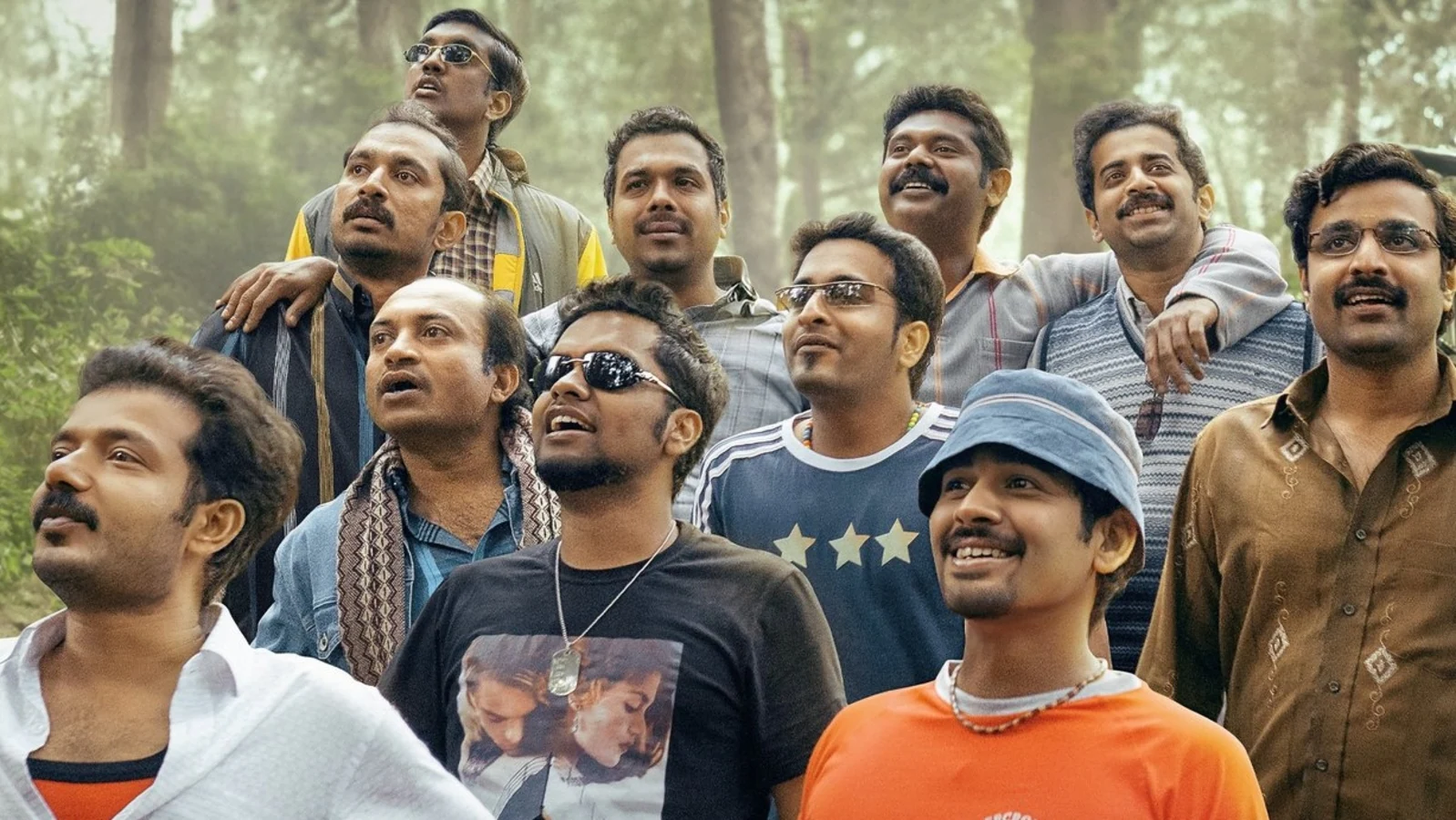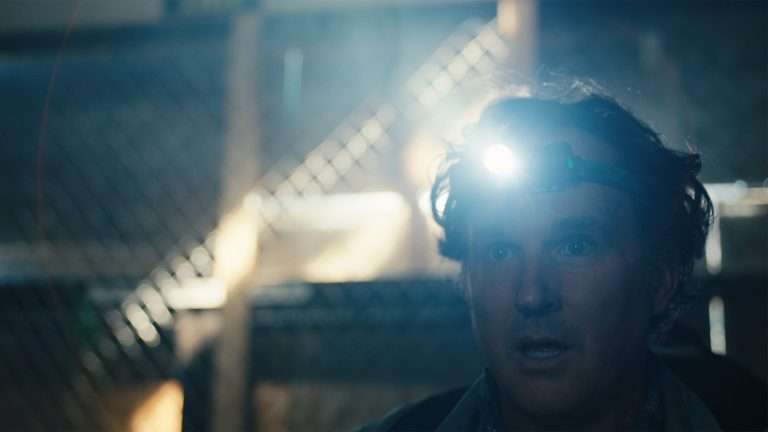“When you want something, all the universe conspires in helping you to achieve it.” This is a truth eloquently exemplified by the remarkable journey of the Manjummel Boys, a group of ten arts club friends from Manjummel, Kochi, who were destined for greatness. At the outset of the film, they challenge a rival team in Vadamvali (tug-of-war) that may have ended in defeat, courtesy of the opponents’ cunning tactic of loosening the rope. Yet, unbeknownst to them, this setback set the stage for a larger purpose.
Through diligent practice and unwavering resolve, the Manjummel Boys mastered the tricks, unwittingly preparing themselves for a momentous challenge. When their dear friend Subhash fell into a bottomless pit, the Boys’ unique skill proved providential. Isn’t it remarkable that they chose to play tug-of-war instead of any other sport and prepared throughout their lives for this particular moment? Call it destiny or kismet, we are all, in some way, being shaped to embrace our future selves when they falter.
Director Chidambaram’s sophomore feature “Manjummel Boys” is a poignant celebration of friendship and camaraderie, showcasing the rare beauty of selfless love. Based on a real-life incident, that occurred in 2006, the film chronicles the adventures of a group of friends who went on a trip to Kodaikanal during their Onam vacation. Their journey takes a dramatic turn when they explore the Guna Caves, named after the 1992 Kamal Haasan classic “Gunaa,” formerly known as the Devil’s Kitchen. In a tragic twist, one of their own, Subhash (Sreenath Bhasi), falls into a 120-foot-deep crevice. What ensues is a gripping tale of desperation and determination, as his friends embark on an extraordinary quest to rescue him, showcasing their unwavering bond in the face of adversity.
Falling within the survival thriller genre, “Manjummel Boys” stands as a worthy successor to Bharathan’s “Malootty” (1990), which had a similar premise in which a five-year-old Malooty ends up falling in a borewell. However, what sets “Manjummel Boys” apart is its intricate focus on the bonds of brotherhood that underpin the unfolding events. What makes this immensely gratifying is that every detail, no matter how seemingly minor or inconsequential, serves a meaningful purpose, contributing to the film’s overall brilliance.
For instance, Sudhi (Deepak Parambol), a friend with an obsession for cleanliness, finds himself wallowing in mud to block the rainwater from flooding the hole. Meanwhile, Sixon (Balu Varghese), whose loud voice often annoys his companions, becomes the key to communicating with their trapped friend. Siju (Lal Jr.), the last member to join the trip proves invaluable with his strong physique and assertive nature, ultimately aiding in the rescue.

Another friend Abhilash (Chandu Salimkumar), who experienced an episode of panic and shock, not knowing how to process the trauma of losing a friend, displays his emotional intelligence and mindfulness at the final moment to lift his friends out of the cave. And the icing on the cake was how their chosen sport, once merely a pastime, transformed into an instrument of salvation.
Chidambaram’s masterful storytelling is further elevated by his innovative use of premonitory sequences, subtly foreshadowing the events that unfold, creating an air of anticipation. On the way to Kodaikanal, the group takes a pit stop at Palani, one of South India’s most revered sites dedicated to Lord Murugan. In a lighthearted exchange, driver Prasad (Khalid Rahman) poses a thought-provoking question to Subhash about his belief in God.
When Subhash responds with “What is God?” Prasad offers a whimsical answer: “God is… you know, the light that shines from above.” This subtly hints that God may not be the abstract figure many envision. While one cannot rely solely on divine intervention, divinity is present in everyone, embodied in the friendships and humanity that will ultimately lead to Subhash’s rescue. In another sequence, we see a flashback in which Kuttan (Soubin Shahir) as a boy, diving into the river to save a friend who has nearly drowned. This moment foreshadows his pivotal role in rescuing Subhash and underscores Kuttan’s character as a natural leader, always prepared to plunge into danger for the sake of his loved ones.
Chidambaram’s direction transforms “Manjummel Boys” into a cinematic gem, skilfully balancing storytelling, character development, and emotional resonance. His exceptional storytelling prowess adeptly weaves past and present, breathes life into the characters, and blends humor, drama, and suspense into the narrative. He achieves a remarkable feat by captivating the audience’s attention, even though they are aware of how the events will turn out in the end.
Ajayan Chalissery’s efforts as the art director and production designer pay off spectacularly in recreating the atmospheric bat-infested ravine where much of the latter half takes place. The meticulous attention to detail and authenticity in constructing the raw aesthetic of the cave is so impressive that one would never guess it was built in a godown in Perumbavoor. Shyju Khalid’s cinematography expertly captures the rescue sequence, heightening emotional stakes and visceral tension as it draws our attention to how Kuttan brings his friend back from the brink of death.
Sushin Shyam’s immersive music and background score complement well in creating a sense of urgency but it is Ilayaraja’s classic Kanmani Anbodu Kathalan from “Gunaa” that takes away the prize in inducing goosebumps. “Manjummel Boys” became a true game-changer by using an anthem of romantic selfless love to celebrate unbreakable friendships forged through shared laughter, adventure, and sacrifice. When the strains of “Manithar unarndha kolla, Idhu manitha kaadhal alla/ Adhaiyum thaandi punithamaanathu” (This is no mortal love for humans to understand/ This is beyond that, pure and holy) reach our ears, they evoke such deep emotions that the powerful human connection can bring tears to our eyes.

From now on, this song will be synonymous with the universal emotion of love, transcending mere romantic relationships. Sushin Shyam’s song “Kuthanthram” is also impactful, especially in the lines, “Orikkalum Theeraaththa Iravundallo/ Koode Pirakkaathe Pirannavar Thunayundallo” (There’s a night that lasts forever/ We’ve brothers, no blood tie but roots that run deep to rely upon). This song’s placement, in the beginning, foreshadows the endless night of torment that awaits the gang and the long-lasting ties that will forever bind them together.
The film strikes an elegant balance between gripping survival drama and heartfelt sentimentalism, leveraging exceptional performances to bring emotional depth to the narrative. Ganapathi, the casting director, assembles a dream cast, where each actor embodies their character with effortless conviction. The characters are initially introduced amidst a song with the gang having fun as uninvited guests at a wedding party and getting into tiffs with a rival gang.
While the ensemble cast shines collectively, individual character development exhibits varying degrees of depth and nuance. Some characters are skilfully fleshed out, revealing rich inner lives, while others remain somewhat one-dimensional, lacking substantial backstory. The characters come from diverse backgrounds and varied beliefs but are united by togetherness, shared moments, and memories. Each with their own quirks and foibles, they form a distinctly unique group.
Despite the challenges of keeping the audience invested in the story throughout, the film pulls through and makes a powerful impact in its finale. The connections drawn to “Gunaa” play a tremendous role in the film’s success. However, it is Chidambaram’s vision and its realization that position him as a promising director in Malayalam cinema. This piece would be remiss if it did not acknowledge the derogatory comments made by B. Jeyamohan. His lash out against the film as the “celebration of some wayward drunkards” is half-baked as drinking is a normal part of social activity, a facilitator of social bonding and celebration.
The Boys deliberately didn’t invite danger, they ventured into the cave after they saw Tamil locals visit the site. They didn’t abandon their friend despite the grim warnings from the community, who had written him off as a lost cause. The friends held unwavering faith in his survival, took action, and left no stone unturned in their efforts to rescue him. To label them as “kudikara porukkis” and reckless youth undermines their strength and resilience, dismissing the profound bond of friendship that drove them to fight against all odds. Their story is one of loyalty, courage, and an unyielding belief in the power of hope.



![Mission: Impossible – Fallout Review [2018]: Accept the best Mission Impossible yet!](https://79468c92.delivery.rocketcdn.me/wp-content/uploads/2018/07/Mission_Impossible_Fallout-768x384.jpg)
![Paddleton [2019] Review – A Bittersweet bromance](https://79468c92.delivery.rocketcdn.me/wp-content/uploads/2019/03/Paddleton-2019-Netflix-High-On-Films-768x432.jpg)
![One and Four [2022]: ‘NYAFF’ Review – Defying the Perception of absolute truth and the fallacy of its adequacy](https://79468c92.delivery.rocketcdn.me/wp-content/uploads/2022/07/ONE-AND-FOUR-Movie-Review-1-768x512.jpeg)


